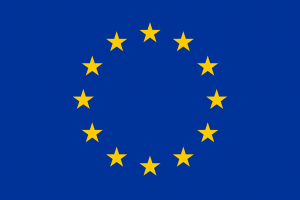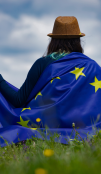Eco-Museum opens in Herceg Novi: The house of Ivo Andrić is the main active point of the museum

The final event of the Co.Co.Tour project was held in Herceg Novi - the opening of the Eco-Museum, within which the house of Nobel laureate Ivo Andrić was determined to be the main active point of the community museum and community tourism, and it includes facilities such as Njegoš’s School, Mirko Komnenović Museum, Josip Bepo Benković Gallery, City Library and others. These two models were developed in cooperation with cross-border partners from Albania and Italy, as part of a project co-financed by the European Union.
The Head of European Integration, Political Affairs, Media and Information Section at the EU Delegation to Montenegro, Plamena Halacheva, pointed out that the Eco-Museum exudes positive energy and that it was an honour for the EU that it was able to help revive it.

“Andrić was always interested in the motif of bridges, he believed that they were an expression of the eternal human struggle to connect and unite the two opposing sides. Andrić showed that bridges bring peace, connect the past and the future, bring us together and bring prosperity. Just like Andrić, the EU is building bridges between people through our cross-border cooperation programmes. This project is a true example of that. In the spirit of Andrić, continue building bridges and connecting people of all nationalities, religions and cultures ", said Halacheva.
Adviser to the Chief Negotiator with the EU, Dragana Marković, reminded that during his prime, after he was awarded the Nobel Prize in 1961, Andrić "found in Herceg Novi an ambience that ennobled him, sharpened one's thought, and strengthened one's noble intentions."

“Memories of Andrić in Herceg Novi are still alive, and the house is a symbol of an environment that encourages writers and artists to create, find inspiration and spend at least part of their lives in this beautiful city. Today, the house of Ivo Andrić represents a new space that will attract poets and novelists, but also tourists for whom culture is high on the agenda and an unavoidable place for schools and tourists visiting Herceg Novi. I am sure that this renovated house will remind us of the imperishability of the work of our Nobel Prize winner, but will also become a symbol of cooperation between Montenegro and the European Union,” Marković emphasized.
The President of the Municipality of Herceg Novi, Stevan Katić, thanked the Delegation of the European Union for its support and reminded that Herceg Novi is strongly committed and focused on the preservation and valorisation of cultural heritage, as well as the modernization of the city's tourist offer.
“We happily accepted the concept of an eco-museum, i.e., of a community museum, certain that it is a smart and sustainable approach to the promotion of tourist potential of Herceg Novi, which relies equally on cultural heritage and modern technology. Most of the project funds were invested in infrastructural works on the house of Nobel Prize Laureate Ivo Andrić, which we estimated to be one of the vital points of the Eco-Museum and the overall cultural and tourist offer of the city", said Katić.
The grand opening of the house of Ivo Andrić for visitors will be held on April 9. Eco-Museum – the house of the Nobel laureate Ivo Andrić – will soon become part of the tourist offer of Herceg Novi. In cooperation with the tour operator "Trend Travel", the Agency for Local Democracy has created a tourist package, a two-hour walking tour with a focus on the developed model of eco-museums and community museums. Visitors will be able to see a permanent exhibition related to the life of the Nobel Laureate in Herceg Novi, but also to get acquainted with the 25 key attractions of the Eco-Museum/Community Museum through an electronic smart totem, as well as with other eco-museums in the Mediterranean network of eco-museums. The mentioned key attractions represent the cultural, historical, natural, tangible and intangible heritage.





